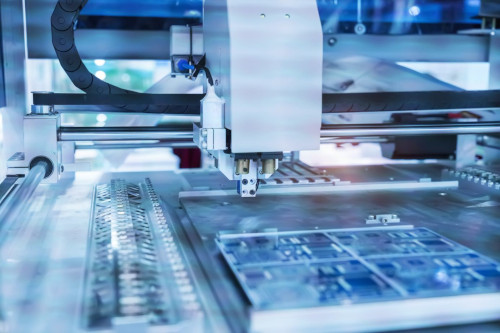How lot size one and other key trends in electronics manufacturing impact digitalization strategies

Siemens Digital Industry Software launched “The Voice of Smart Digital Manufacturing,” a 10-part podcast series. It’s dedicated to the industry of tomorrow and the impact that smart digital manufacturing is having, and what to expect from it in the future. We interviewed experts from different industries – from Medical and Industrial Machinery to Electronics – to share their experiences with digitalization and how it helped them overcome their challenges. This series shines a light on the road ahead for industries willing to embrace change brought on by digital transformation.
We discussed accelerating digital transformation with the Mendix enterprise low-code application platform in the last episode. In our eighth episode, we discuss how the key trends in electronics manufacturing impact digitalization strategies.
Meet the expert
First, let’s meet our industry expert for this episode – Oren Manor.
Oren is the Director of Business Development for Digital Manufacturing at Siemens Digital Industries Software. He is responsible for charting the future direction of Siemens’ products and technologies for the electronics manufacturing portfolio. Oren’s been in this role for almost a decade and came from the Valor division of the Mentor Graphics acquisition. Before working at Siemens, he worked for Signature-IT and Jungo in business development and sales positioning.
Oren received a Bachelor of Science in Computer Science and Economics from Tel Aviv University.
Connect with Oren Manor on LinkedIn.
The key trends in today’s electronics manufacturing industry
From lot size one, increasing product complexity and cloudification, electronics manufacturers face challenging megatrends. These trends impact the type of products manufactured and how they are manufactured.
Consumer products across industries (computers, phones, cars, etc.) require much more personalization (and complexity) than before. This requires manufacturers to develop different models and configurations, transitioning the industry from building-to-stock to building-to-order and even engineering-to-order. Excelling at high-volume manufacturing is very different than high-mix manufacturing, presenting challenges in the way manufacturers build products. The increased complexity is another layer of complexity for manufacturers. While manufacturers can’t change external customer requests, they can better manage the resulting complexity. Electrification is re-imagining mechanical products and adding in electronics components so they can collect data and talk to the cloud.
The pandemic and electronics manufacturing digitalization
On top of these rising trends, of course, the pandemic continues to impact electronics manufacturers. We helped customers digitalize their factories as they work to evolve manufacturing processes that match the new market demands. Three examples of this include:
- Automating and streamlining PCB assembly and test engineering processes
- Becoming more efficient with new product introduction (NPI) processes for long-term scalability
- Increasing agility to move products between lines and sites
With an MES, customers can manage the route, understand activities on the production floor and know the right product is going to the right place. But, they lack real-time visibility of what’s happening on the machines— material consumption, material availability, and quality. With smaller lot sizes, manufacturers must make faster decisions. Fast decisions require real-time data collection to quickly recognize process deviations and take corrective action. In our partnership with Scanfil, one of the top 20 electronics manufacturing service (EMS) companies, they did just that, and the results were remarkable.

Manufacturers need a holistic, end-to-end manufacturing execution platform. It can collect data and control the manufacturing process across the production lines and across the different manufacturing systems.
Learn how digitalization is impacting the electronics manufacturing industry. Listen to the latest episode of “The Voice of Smart Digital Manufacturing” podcast here.


